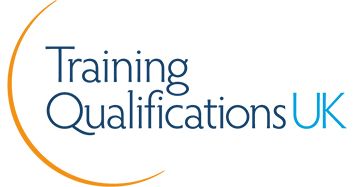Understanding Domestic Abuse and the Restorative Process
 85.5%
85.5%
- SALE Savings End Midnight Wednesday 30th April
- SALE Savings End Midnight Wednesday 30th April
Understanding Domestic Abuse and the Restorative Process
With 1 in 4 women and 1 in 6 men experiencing domestic abuse in their lifetime (UK national statistics) it is becoming one of society’s biggest problems in the UK. The heavy involvement of statutory and voluntary agency’s e.g. police, social services, drug, alcohol & substance misuse services, health services, mental health services and education, domestic abuse is fast becoming a financial burden too.
With 65% of children on the child protection register having experienced domestic abuse there is a close correlation between child abuse and domestic abuse. However, the training availability for understanding the effects of domestic abuse on men, women and children is insufficient even within social work, childcare, support work, police, teaching, medical, legal, health and education.
The course outline
Understanding Domestic abuse and the Restorative Process is about developing an understanding of the dynamics of abusive relationships, the effect on male, female and child victims and the restorative process. The course provides an insight into the experience of victims of domestic abuse and how they can be helped to understand, recover, repair and build a life free from domestic abuse.
The target market
The course has been designed to give the professional an opportunity to build on their skills and progress into roles within social care, teaching, child care, police, health care, education and many other professions. The course also enables victims of domestic abuse to follow a journey of self discovery and begin the restorative process.
The aim of the course
The professional learner will understand how a victim’s life becomes a cycle of fear, self depreciation, and chaos. Repeating the same cycle in not only intimate relationship but also friendships. Professionals will be able to support a victim through the journey of self discovery and victims completing the course will travel the journey of self discovery for themselves.
A victim completing this course will have access to a gateway to break the old cycle of abusive relationships through gaining knowledge, understanding and recognition by following a journey of self discovery.
Modules
Lesson 1: What is domestic abuse?
By the end of this lesson the student should be able to:
To describe the types of domestic abuse
To define the types of abusive relationships
To list support services available to victims of domestic abuse
Lesson 2: The Grooming process
By the end of this lesson the student should be able to:
To summarise the grooming process
To recognise the early warning signs of an abusive relationship
To discuss the victim’s do’s and dont’s during the early stages of a relationship
Lesson 3: The dynamics of abusive relationships
By the end of this lesson the student should be able to:
To recognise the cycle of an abusive relationship
To appreciate the dynamics of abusive relationships
To explore the beliefs and perceptions of the abuser and victim
Lesson 4: The effects of domestic abuse on adult victims
By the end of this lesson the student should be able to:
To recognise the effects of domestic abuse on adult victims
To list why victims stay in abusive relationships
Lesson 5: The effects of domestic abuse on children
By the end of this lesson the student should be able to:
To define the effects of domestic abuse on children of different ages
To identify how the abuser uses the children to control and manipulate the mother
Lesson 6: Restorative parenting
By the end of this lesson the student should be able to:
To compare parenting issues during an abusive relationship and after an abusive relationship ends
To identify restorative parenting practice
To implement positive parenting techniques
Lesson 7: Healthy relationships
By the end of this lesson the student should be able to:
To explore types of relationships
To explain the need for boundary setting within relationships
To define healthy relationships
Lesson 8: Self Esteem building
By the end of this lesson the student should be able to:
To recognise the effect of low self esteem on victims of domestic abuse
To implement self esteem building techniques
To discuss building self respect
Lesson 9: Personal safety issues for victims of domestic abuse
By the end of this lesson the student should be able to:
To identify potential risky situations
To create a plan for personal safety in different situations including abusive relationships
Lesson 10: Body language basics
By the end of this lesson the student should be able to:
To define negative and positive body language
To recognise the impact of negative and positive body language on others
Entry Requirements
There is no experience or previous qualifications required for enrolment on this course. It is available to all students, of all academic backgrounds.
All course fees, inclusive of all payment plans including our Premium Credit Limited option, must be settled before certification can be ordered.
*You will have access to the course for 24 months.
On successful completion of your course you will receive the learndirect Certificate of Completion of Training in Understanding Domestic Abuse and the Restorative Process.
Your course certificate will also state the number of CPD points/hours the course is eligible for.
View a sample of the certificate (opens in new window)
learndirect is one of the largest integrated providers of courses and qualifications, training, and employment services in the UK
- Each year around 6,000 businesses equip their staff for success with learndirect
- learndirect have helped more than 75,000 businesses equip their employees with the skills needed to improve productivity.
- Almost 700,000 maths and English test passes have been achieved with learndirect.
- 300,000 people fulfilled their career ambitions last year with learndirect.
- Over 250,000 apprentices have achieved with learndirect.
- SALE Savings End Midnight Wednesday 30th April
- SALE Savings End Midnight Wednesday 30th April
Understanding Domestic Abuse and the Restorative Process
With 1 in 4 women and 1 in 6 men experiencing domestic abuse in their lifetime (UK national statistics) it is becoming one of society’s biggest problems in the UK. The heavy involvement of statutory and voluntary agency’s e.g. police, social services, drug, alcohol & substance misuse services, health services, mental health services and education, domestic abuse is fast becoming a financial burden too.
With 65% of children on the child protection register having experienced domestic abuse there is a close correlation between child abuse and domestic abuse. However, the training availability for understanding the effects of domestic abuse on men, women and children is insufficient even within social work, childcare, support work, police, teaching, medical, legal, health and education.
The course outline
Understanding Domestic abuse and the Restorative Process is about developing an understanding of the dynamics of abusive relationships, the effect on male, female and child victims and the restorative process. The course provides an insight into the experience of victims of domestic abuse and how they can be helped to understand, recover, repair and build a life free from domestic abuse.
The target market
The course has been designed to give the professional an opportunity to build on their skills and progress into roles within social care, teaching, child care, police, health care, education and many other professions. The course also enables victims of domestic abuse to follow a journey of self discovery and begin the restorative process.
The aim of the course
The professional learner will understand how a victim’s life becomes a cycle of fear, self depreciation, and chaos. Repeating the same cycle in not only intimate relationship but also friendships. Professionals will be able to support a victim through the journey of self discovery and victims completing the course will travel the journey of self discovery for themselves.
A victim completing this course will have access to a gateway to break the old cycle of abusive relationships through gaining knowledge, understanding and recognition by following a journey of self discovery.
Modules
Lesson 1: What is domestic abuse?
By the end of this lesson the student should be able to:
To describe the types of domestic abuse
To define the types of abusive relationships
To list support services available to victims of domestic abuse
Lesson 2: The Grooming process
By the end of this lesson the student should be able to:
To summarise the grooming process
To recognise the early warning signs of an abusive relationship
To discuss the victim’s do’s and dont’s during the early stages of a relationship
Lesson 3: The dynamics of abusive relationships
By the end of this lesson the student should be able to:
To recognise the cycle of an abusive relationship
To appreciate the dynamics of abusive relationships
To explore the beliefs and perceptions of the abuser and victim
Lesson 4: The effects of domestic abuse on adult victims
By the end of this lesson the student should be able to:
To recognise the effects of domestic abuse on adult victims
To list why victims stay in abusive relationships
Lesson 5: The effects of domestic abuse on children
By the end of this lesson the student should be able to:
To define the effects of domestic abuse on children of different ages
To identify how the abuser uses the children to control and manipulate the mother
Lesson 6: Restorative parenting
By the end of this lesson the student should be able to:
To compare parenting issues during an abusive relationship and after an abusive relationship ends
To identify restorative parenting practice
To implement positive parenting techniques
Lesson 7: Healthy relationships
By the end of this lesson the student should be able to:
To explore types of relationships
To explain the need for boundary setting within relationships
To define healthy relationships
Lesson 8: Self Esteem building
By the end of this lesson the student should be able to:
To recognise the effect of low self esteem on victims of domestic abuse
To implement self esteem building techniques
To discuss building self respect
Lesson 9: Personal safety issues for victims of domestic abuse
By the end of this lesson the student should be able to:
To identify potential risky situations
To create a plan for personal safety in different situations including abusive relationships
Lesson 10: Body language basics
By the end of this lesson the student should be able to:
To define negative and positive body language
To recognise the impact of negative and positive body language on others
Entry Requirements
There is no experience or previous qualifications required for enrolment on this course. It is available to all students, of all academic backgrounds.
All course fees, inclusive of all payment plans including our Premium Credit Limited option, must be settled before certification can be ordered.
*You will have access to the course for 24 months.
Qualifications
On successful completion of your course you will receive the learndirect Certificate of Completion of Training in Understanding Domestic Abuse and the Restorative Process.
Your course certificate will also state the number of CPD points/hours the course is eligible for.
View a sample of the certificate (opens in new window)
learndirect is one of the largest integrated providers of courses and qualifications, training, and employment services in the UK
- Each year around 6,000 businesses equip their staff for success with learndirect
- learndirect have helped more than 75,000 businesses equip their employees with the skills needed to improve productivity.
- Almost 700,000 maths and English test passes have been achieved with learndirect.
- 300,000 people fulfilled their career ambitions last year with learndirect.
- Over 250,000 apprentices have achieved with learndirect.
 85.5%
85.5%
learning
learning hours





















 If you find this course cheaper anywhere
If you find this course cheaper anywhere

